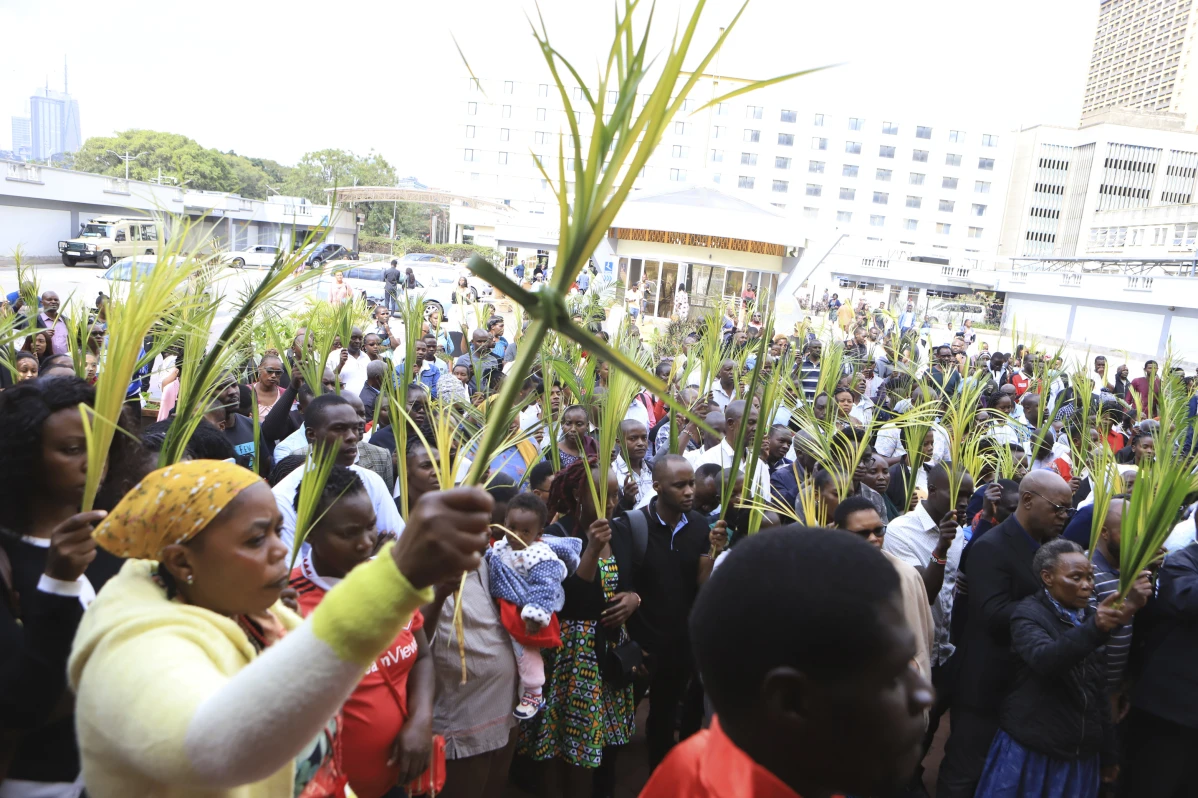
Have you ever wondered why Christians wave palm branches on the Sunday before Easter?
The symbolism of Palm Sunday goes beyond historical remembrance—it invites believers to consider the deeper spiritual message behind Christ’s entry into Jerusalem.
Riding a donkey, a humble beast of burden, Jesus presented himself not as a conquering king, but as a messenger of peace.
This gesture echoed the words of the prophet Zechariah, who wrote, "See, your king comes to you, righteous and victorious, lowly and riding on a donkey" (Zechariah 9:9).
Well, Palm Sunday marks the beginning of Holy Week and commemorates Jesus Christ’s triumphant entry into Jerusalem, an event described in all four canonical gospels of the Bible.
Its name originates from the palm branches waved by the crowd to greet and honor Jesus Christ as he entered the city.
As crowds welcomed Him by laying palm branches and cloaks along His path, they shouted "Hosanna!" a cry for salvation and praise.
Observed by Christians worldwide, Palm Sunday is the first day of Holy Week.
In Western Christianity, this is the beginning of the last week of the solemn season of Lent, preceding Eastertide.
In Eastern Christianity, however, Holy Week commences after the conclusion of Great Lent.
This day is both a celebration and a prelude to the somber events of Good Friday and the joy of Easter Sunday.
This year's Palm Sunday falls on April 13.
In some traditions, Palm Sunday also marks the start of deeper personal reflection.
Many churches encourage the faithful to meditate on the coming days of Holy Week, which recount betrayal, sacrifice, and ultimately, redemption.
It is a time to examine one’s life, acknowledge spiritual shortcomings, and seek renewal in anticipation of Easter.
Modern interpretations of Palm Sunday often focus on what it means to welcome Christ today.
The biblical crowds who shouted “Hosanna” expected a political savior, but Jesus offered spiritual salvation.
Contemporary sermons and devotionals frequently explore how people can open their hearts to the divine presence in daily life—not just in times of celebration but also during hardship.
Palm Sunday, then, becomes a metaphorical gateway: it invites Christians to walk with Christ through the trials of the week, ultimately arriving at the transformative joy of Easter morning.
Churches often hold processions and distribute palm fronds, which are later saved and burned to create ashes for the following year’s Ash Wednesday.
Ash Wednesday is a solemn day of fasting and reflection that signals the start of Christianity’s most penitent season.
In other churches around the world, the palms are often taken home by congregants.
In most Christian rites, Palm Sunday is celebrated by the blessing and distribution of palm branches or the branches of other, native trees, representing the palm branches that the crowd scattered before Christ as he rode into Jerusalem.
These palms are sometimes woven into crosses.
The difficulty of procuring palms in unfavorable climates led to the substitution of branches of native trees, including box, olive, willow, and yew.
More than just a tradition, Palm Sunday invites reflection on themes of humility, peace, and the fulfillment of prophecy.
In the accounts of the four canonical gospels, Christ's triumphant entry into Jerusalem takes place a week before his resurrection.
Only the gospel of John shows a timeline of the event, dated six days before the Passover.
According to the gospels, Jesus rode on a donkey into Jerusalem, and the celebrating people there laid down their cloaks and small branches of trees in front of him, singing part of Psalm 118: 25–26: "Blessed is He who comes in the name of the Lord. We bless you from the house of the Lord."
The symbolism of the donkey may refer to the Eastern tradition that it is an animal of peace, unlike the horse, which is the animal of war.
On Palm Sunday, the ritual or liturgy typically starts with a blessing of the palms by clergy.
It is followed by a reading of the Passion of Christ, meaning an account of the final events of Jesus’s life.









